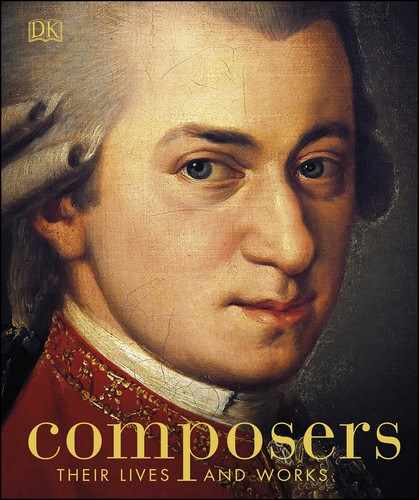William Byrd
c. 1540–1623, ENGLISH
A prolific and versatile composer of vocal and instrumental music, both sacred and secular, Byrd maintained his popularity despite his conversion to Catholicism during the English Reformation.

WILLIAM BYRD, c. 1580
The talented composer, who wrote more than 500 works, was initially trained, at London’s Chapel Royal, in singing by Richard Bower and in keyboard and composition by Thomas Tallis. Years later, he was described by the Chapel Royal as “a Father of Musick.”
IN CONTEXT
The English Reformation
Following Henry VIII’s controversial establishment of the Protestant Church of England, there was a long period of sectarian turmoil, which characterized the English Reformation. Despite the Church’s renunciation of papal authority, many people, including Henry’s daughter Mary, clung to Catholic beliefs. As queen of England, Mary attempted to reverse her father’s reforms. When she was succeeded by the Protestant Elizabeth I, Catholicism again became a covert religion.
Byrd was about 18 years old and a Protestant when Elizabeth came to the throne in 1558, but he converted to Catholicism in the 1570s, halfway through her reign. Perhaps because Elizabeth was more tolerant than some of her Puritan subjects, and a music-lover, too, Byrd did not suffer undue persecution, and he lived to enjoy the more liberal attitudes of her successor, James I, the son of Mary, Queen of Scots.

PORTRAIT OF ELIZABETH I BY NICHOLAS HILLIARD
William Byrd is thought to have been born in London in about 1540, although this date is disputed. What can be assumed is that he had a thorough musical education, and was most likely a chorister at London’s Chapel Royal, where he was a pupil of Thomas Tallis.

SCORE OF SING JOYFULLY
The late work Sing joyfully unto God our strength is a church anthem for six voices. It is widely hailed as one of Byrd’s finest anthems.
In 1563, he was appointed organist and choirmaster at Lincoln Cathedral, a post that he held for nine years. In Lincoln, he married Julian Birley—it was a happy marriage that lasted from 1568 to her death in the 1580s.
A growing reputation
During his time in Lincoln, Byrd’s reputation as a performer and composer was growing, and in 1570 he was honored with the title of Gentleman of the Chapel Royal. There were, however, signs of friction between him and the rather Puritan Church authorities, probably because of his penchant for writing ornate church music.
Nevertheless, his compositions were appreciated by the musical establishment and by many of the nobility, and in 1575 he began sharing the post of organist with Tallis at the Chapel Royal. Elizabeth I overlooked Byrd’s tendency to the elaborate ritual of high Anglicanism, granting him and Tallis a patent to print and sell music and ruled manuscript paper—consort music and part-songs were a popular pastime among the English middle-classes, and Byrd received a sizable income from the franchise.

LINCOLN CATHEDRAL
Byrd was appointed choirmaster and organist at the magnificent cathedral in Lincoln in 1563, succeeding the composer Thomas Appleby. It was during Byrd’s time there that his reputation as an outstanding composer and performer was established. He left Lincoln in 1572.
Catholic composer
Around this time, he converted to Catholicism and, taking advantage of the queen’s endorsement, composed music for the Catholic services as well as for the Anglican Church. But in the 1580s, attitudes toward Catholics began to harden, and he and his family were under suspicion because of their connections with prominent Catholic families. Despite repeated accusations of recusancy—refusing to attend Anglican services—Byrd continued to compose for both the Church of England and the Catholic rites, but rather cynically curried favor with the Protestant nobility by dedicating many of his compositions to them. These included, as well as the two collections of motets, known as Cantiones sacrae, a large number of pieces for instrumental consorts, two English song-books, and My Lady Nevells Booke for keyboard—all of which were written with the popular market in mind.
Byrd remarried after his wife’s death, and in 1593 or 1594 moved with his family to Stondon Massey in Essex, where he had Catholic friends, including his patron, Sir John Petre. This gave him the opportunity to compose the cycles of Catholic Masses for three, four, and five voices, and the two sets of motets, the Gradualia. These were his last major works before his retirement.
